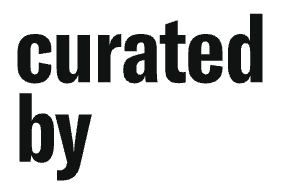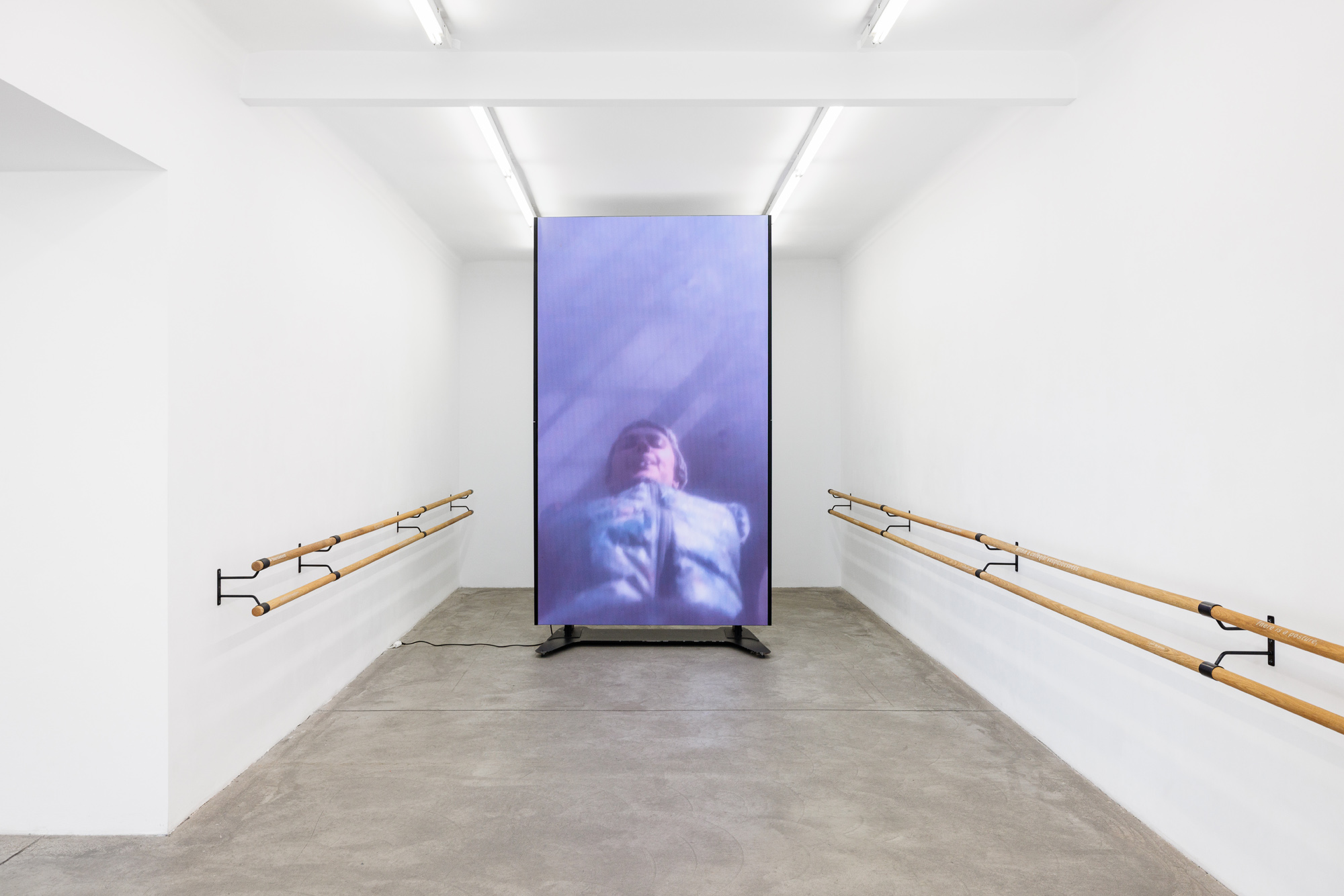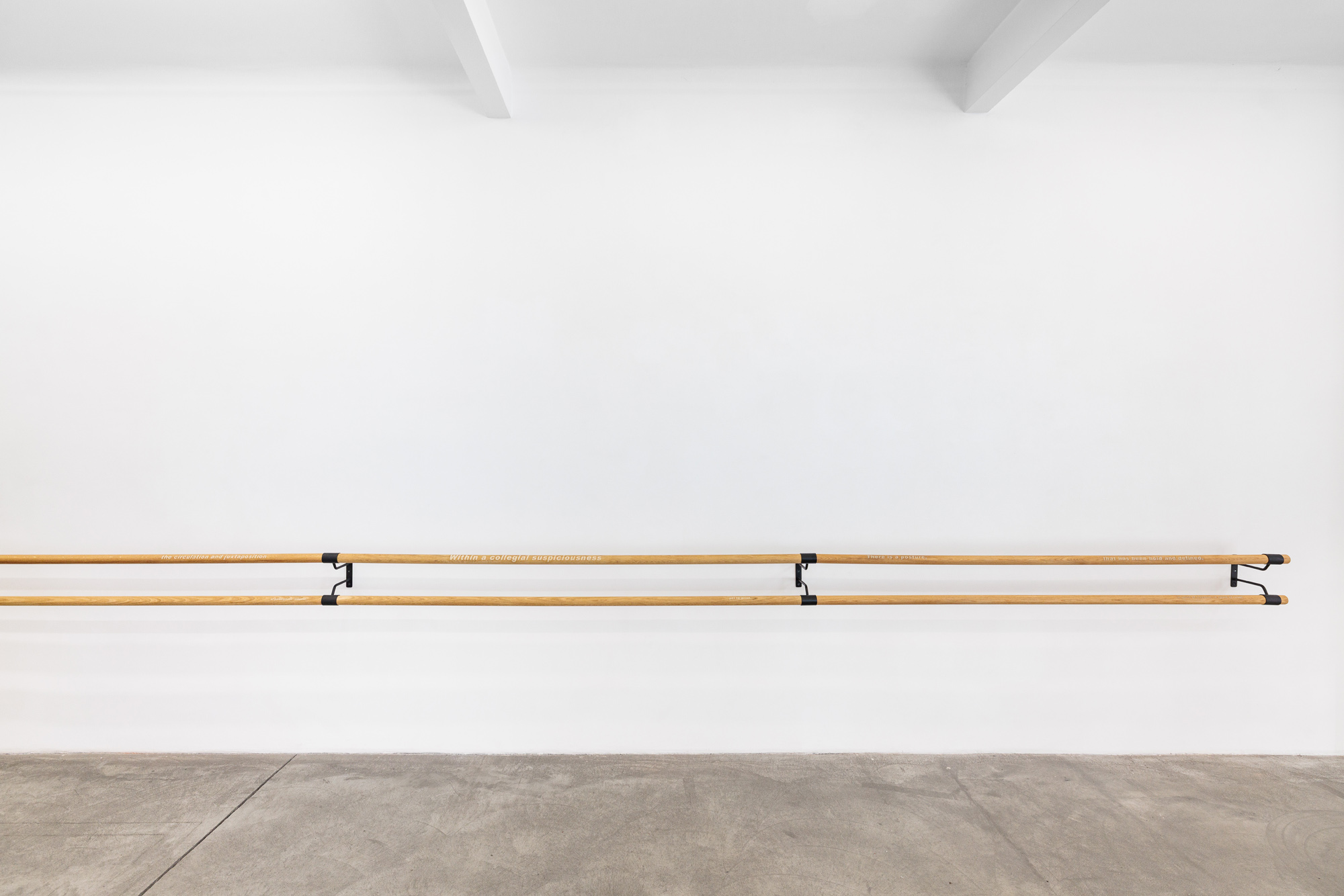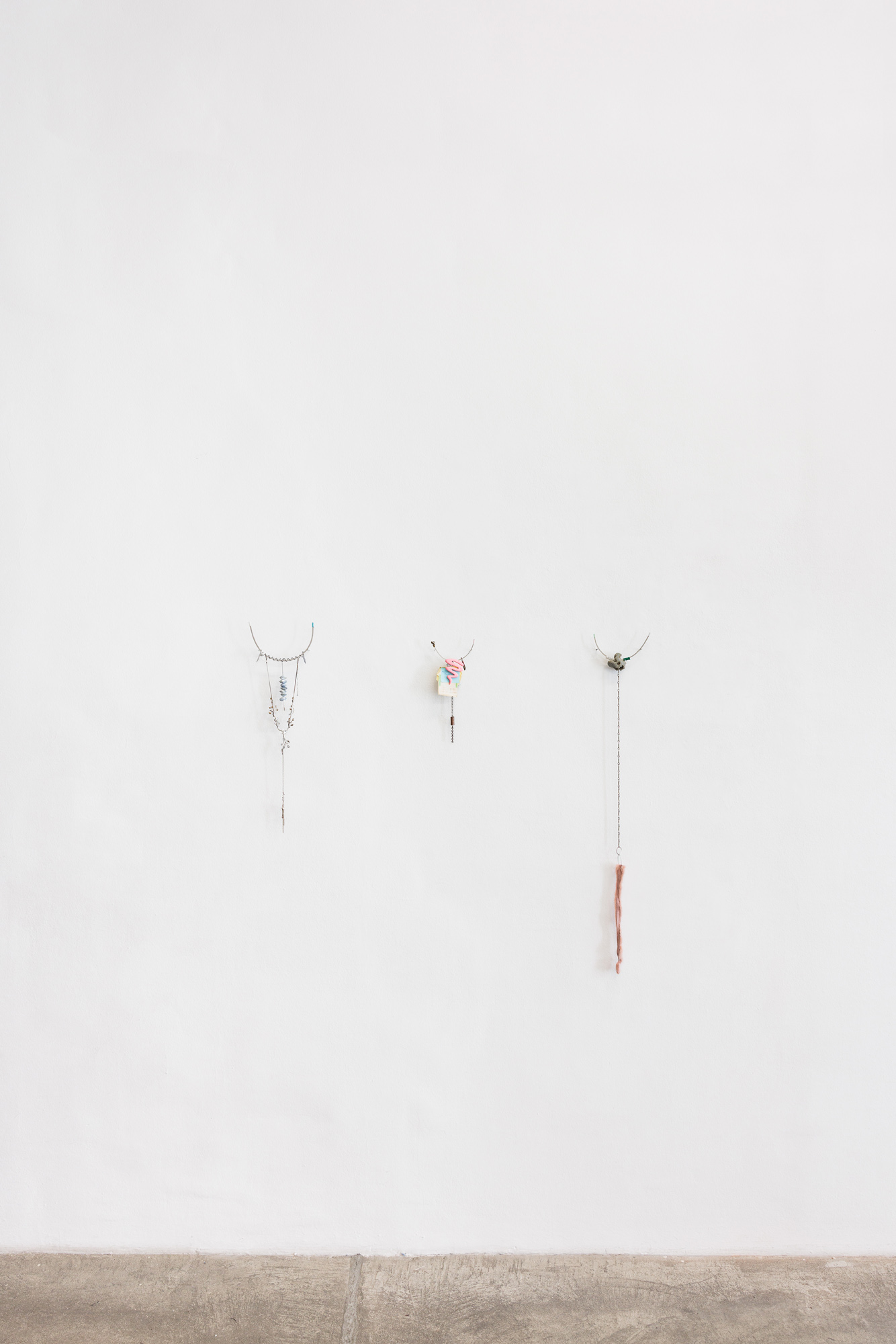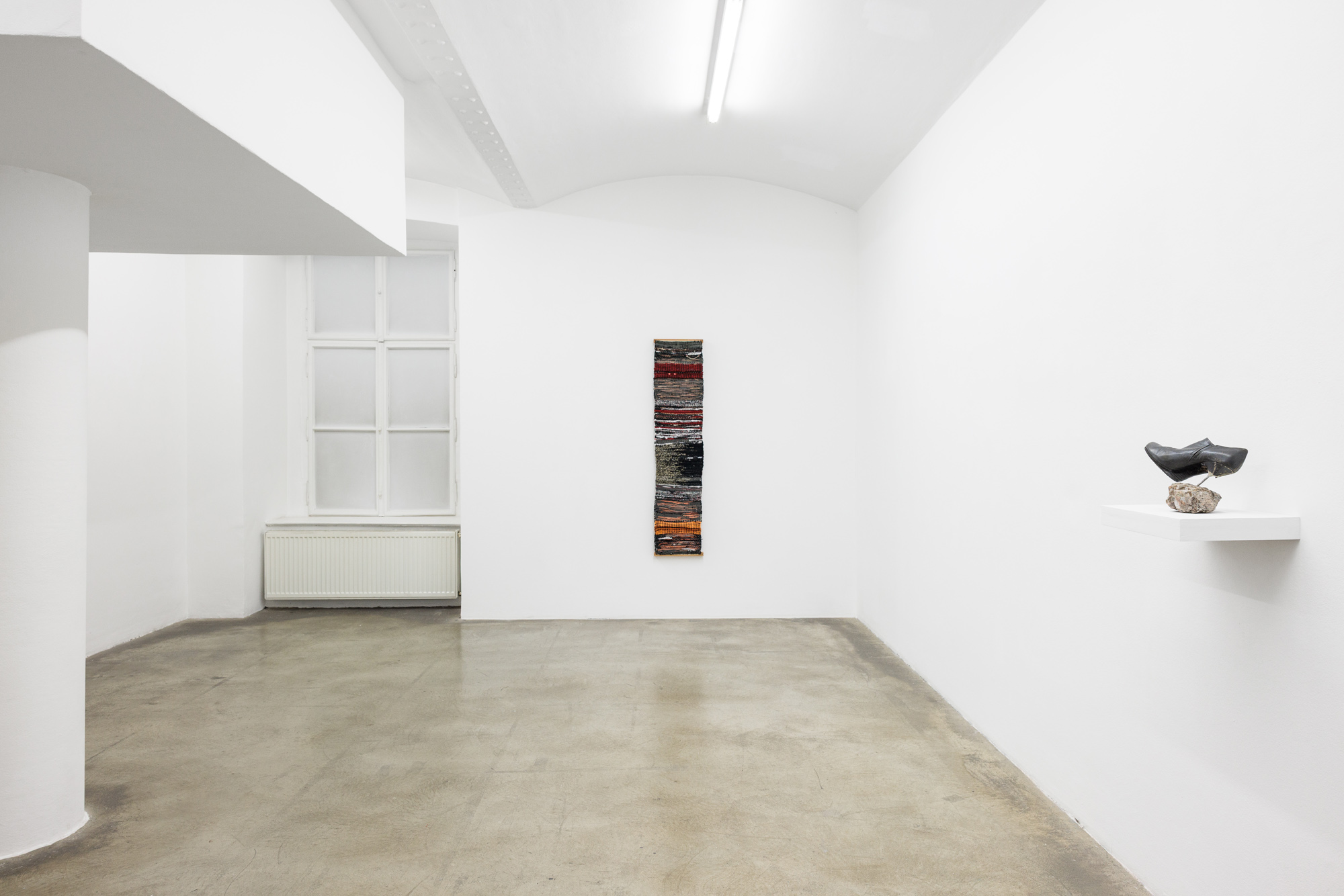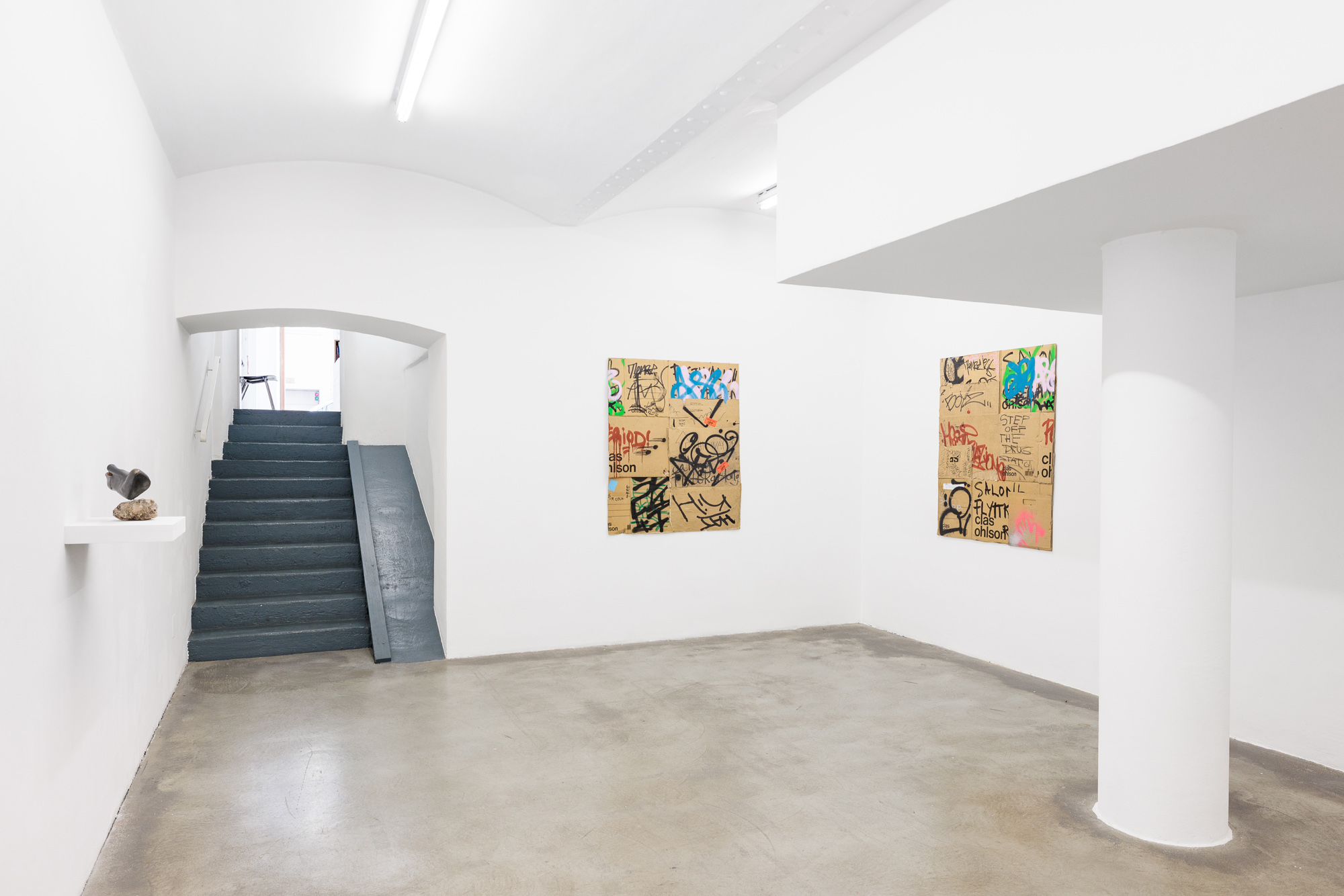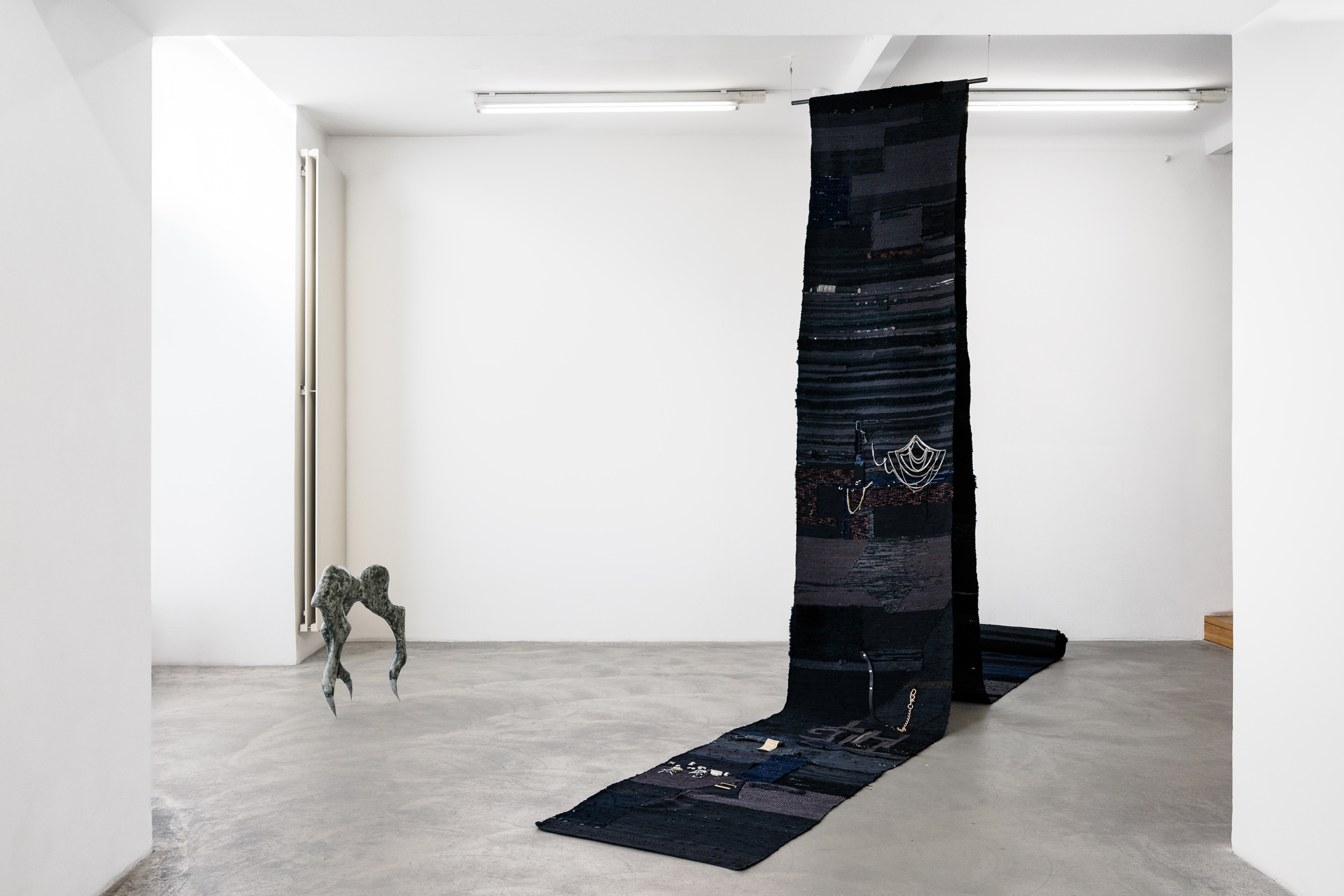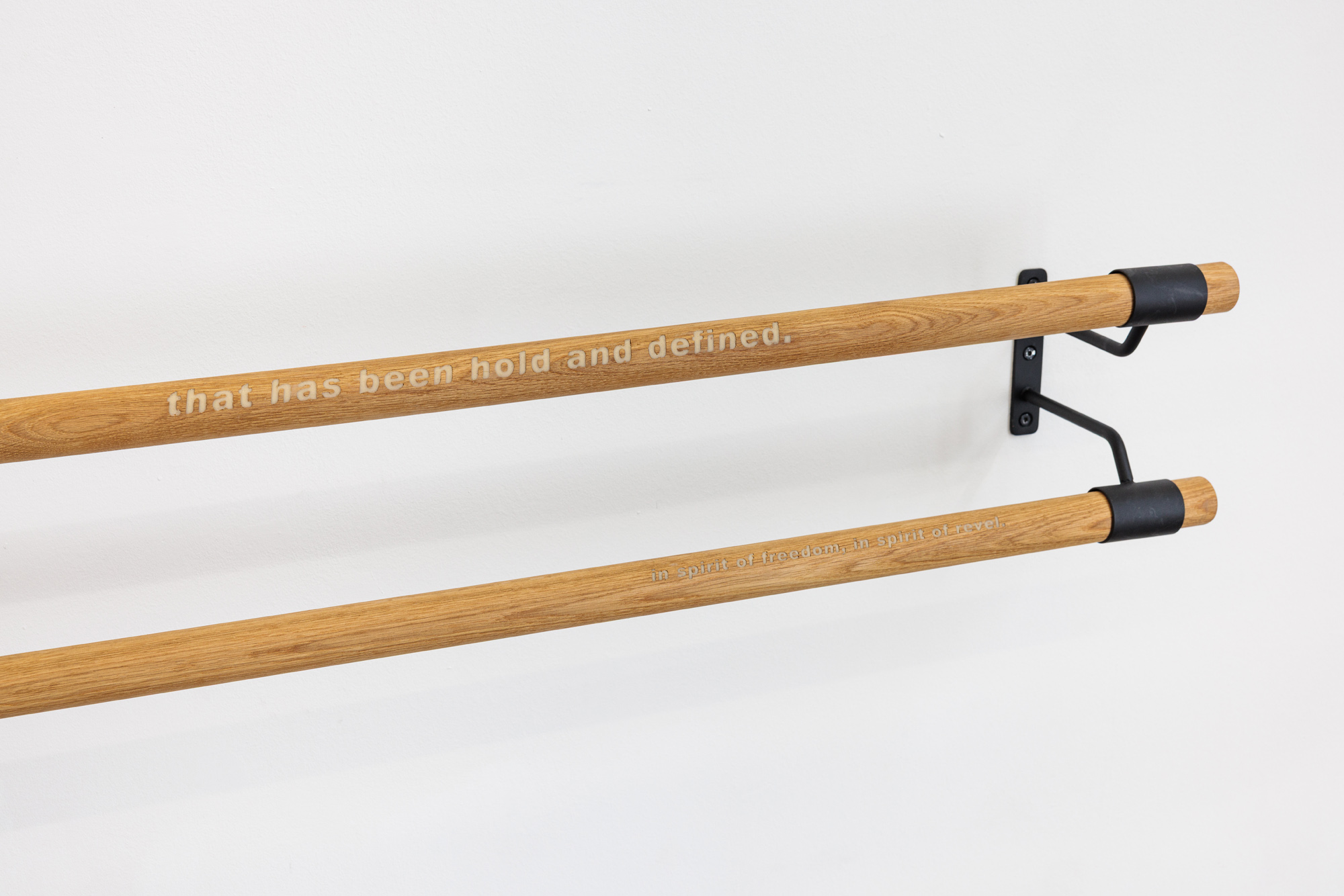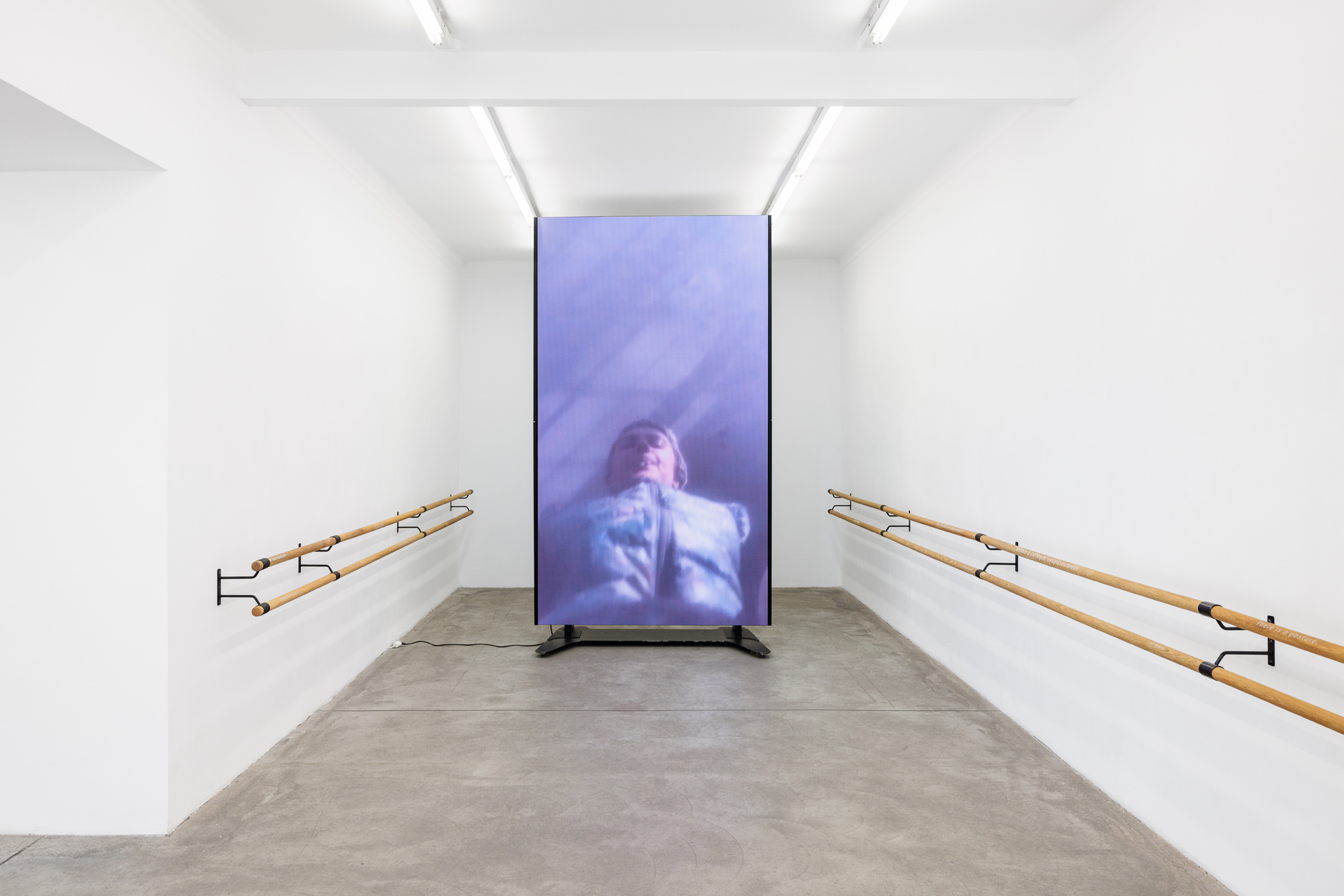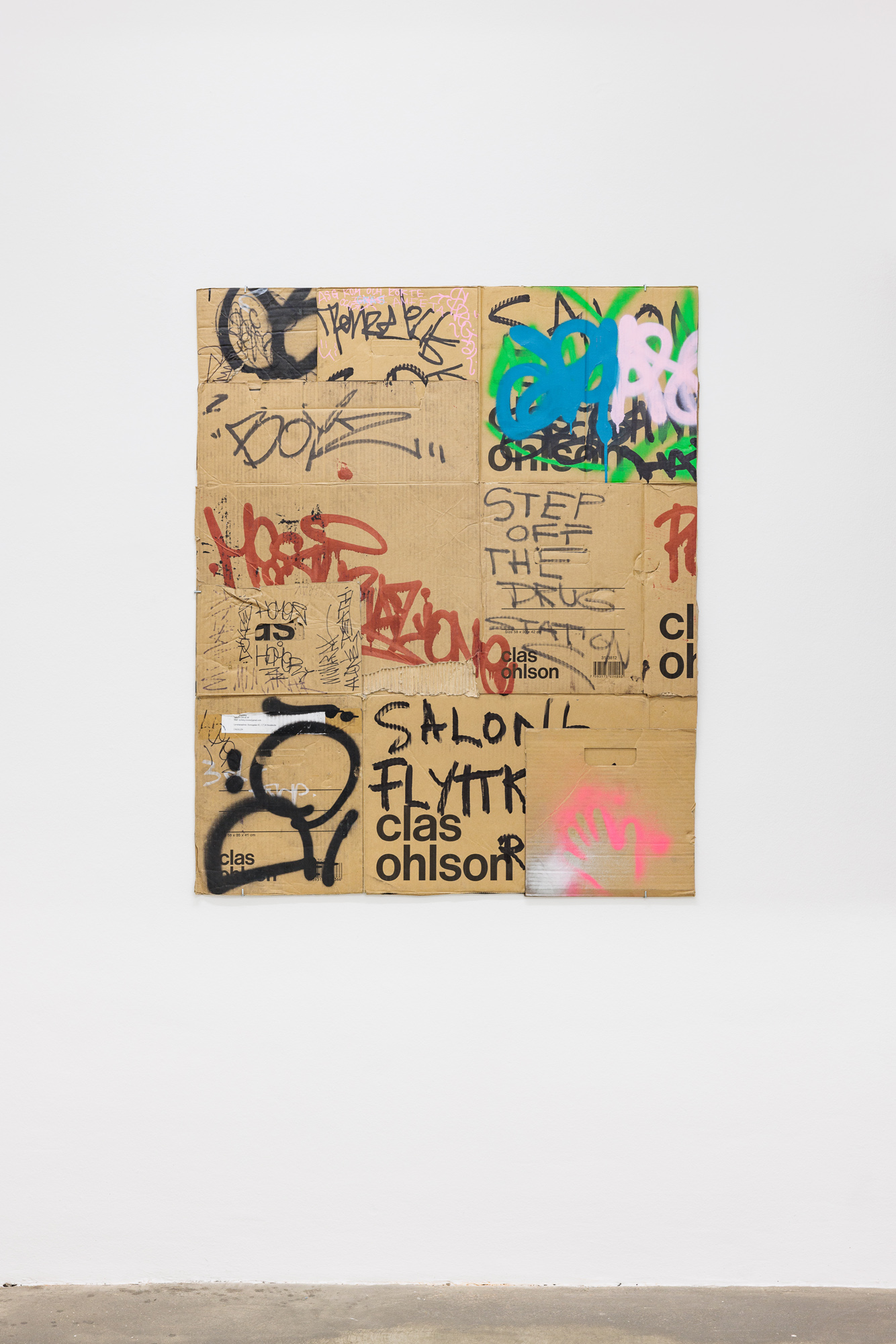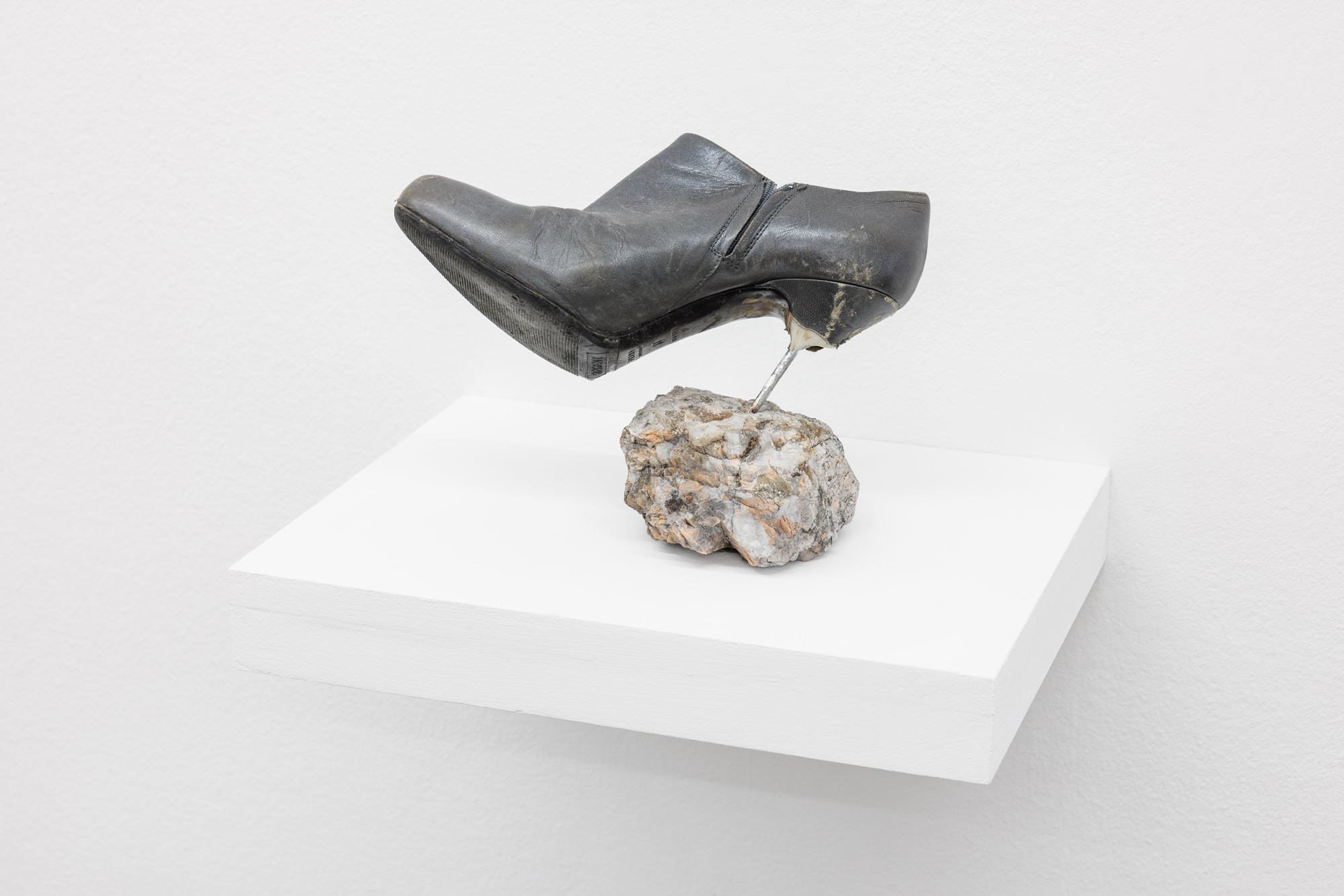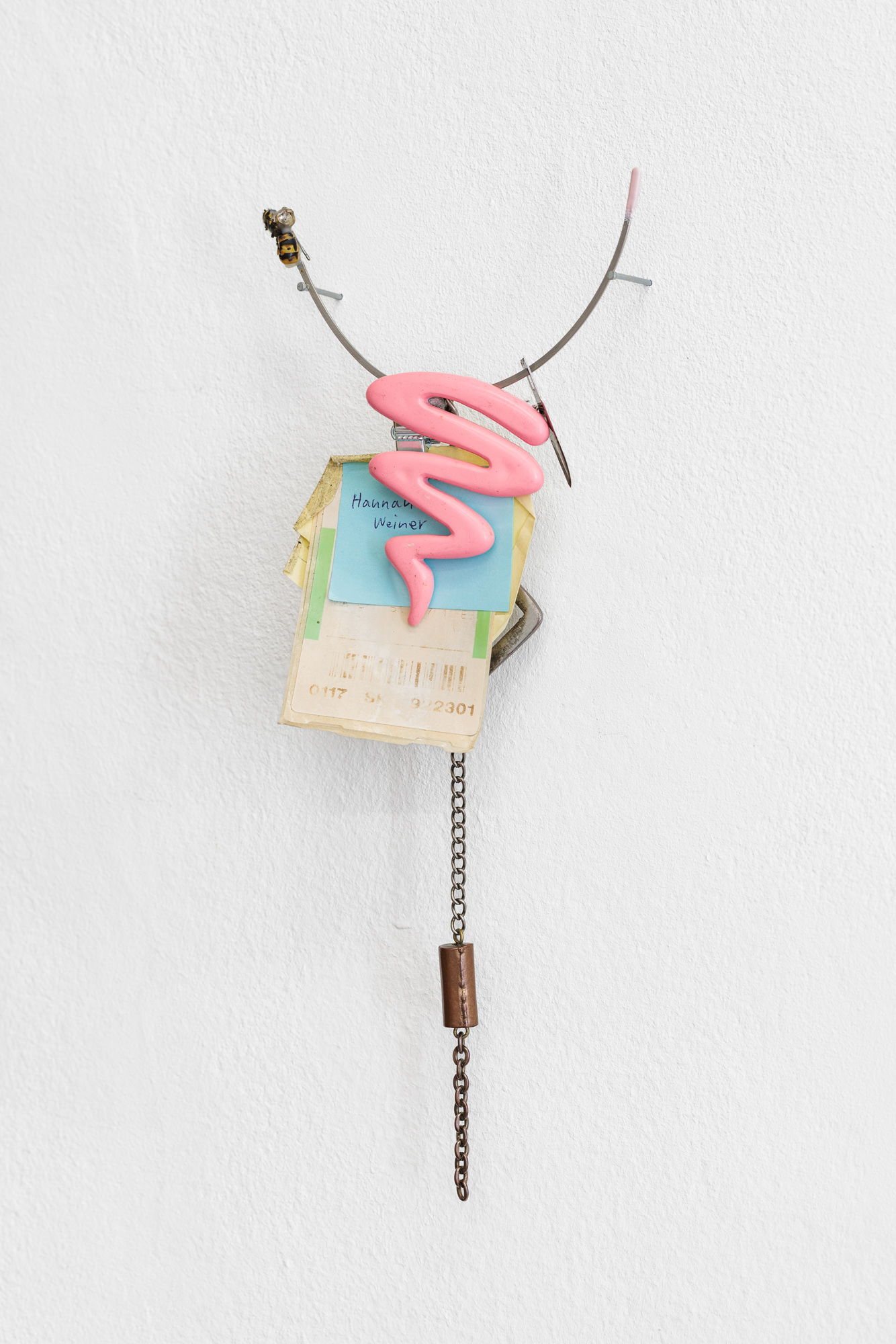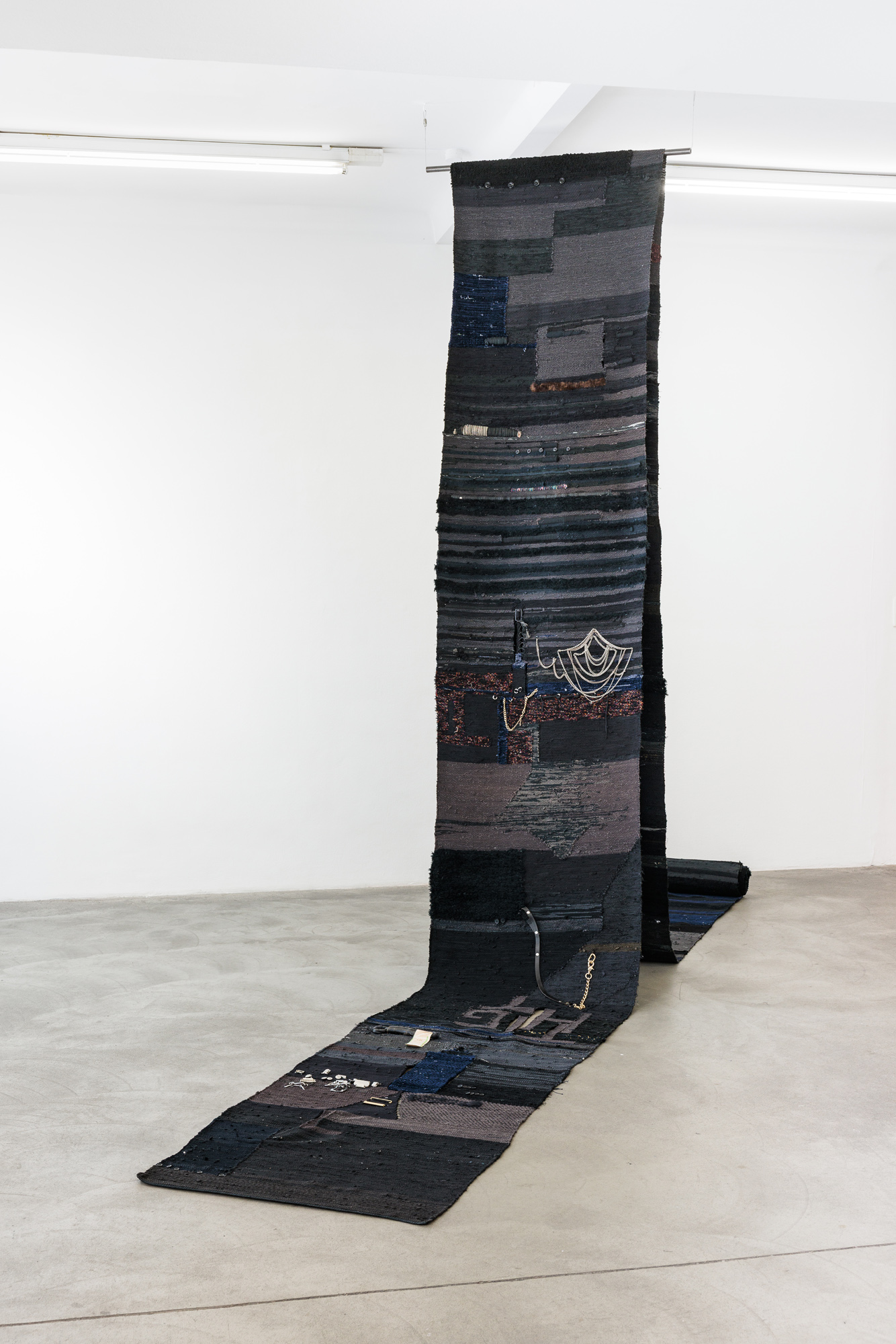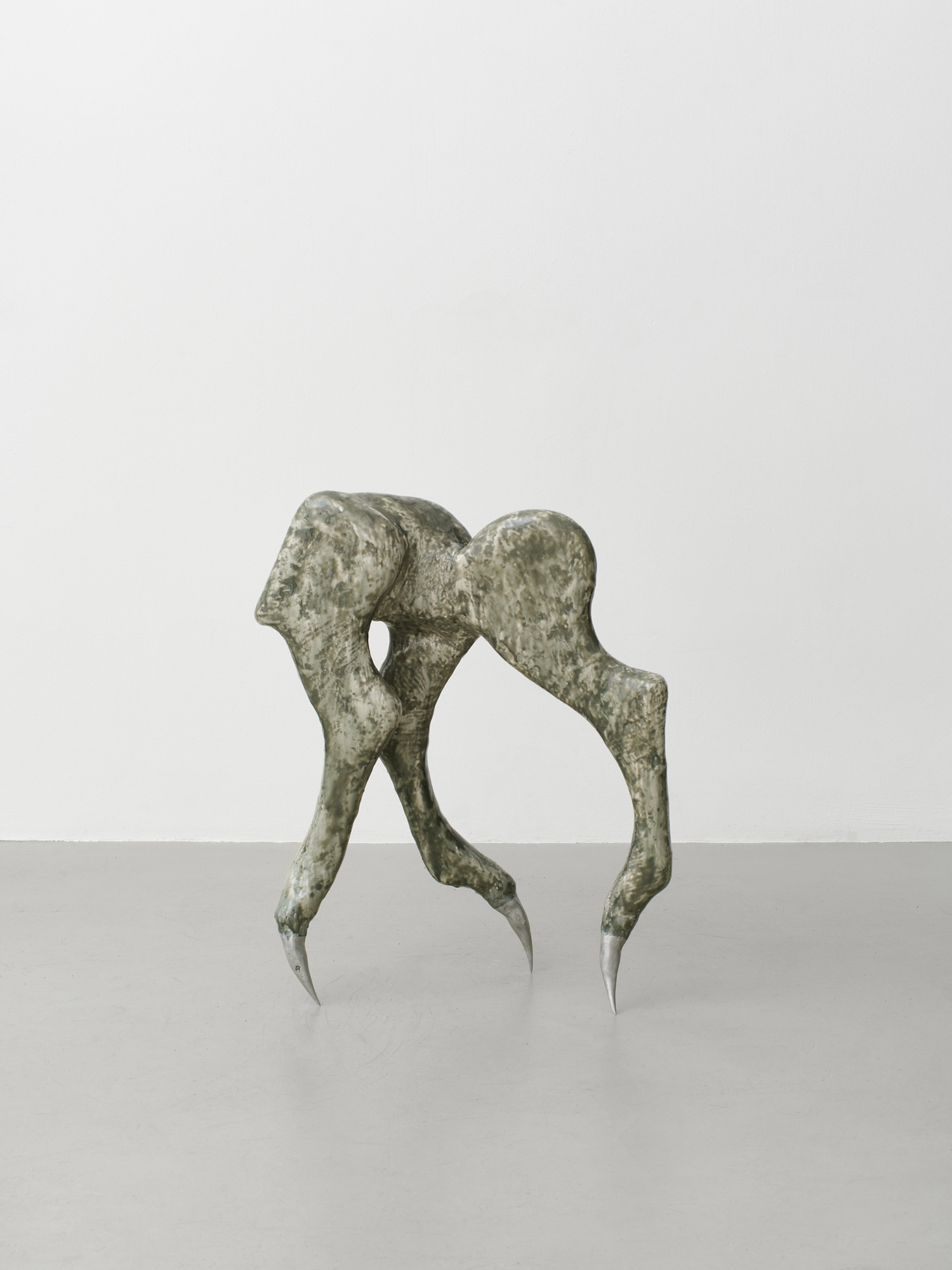Galerie Martin Janda curated by Tessa Praun
„And tell us how to save us from ourselves“

www.martinjanda.at
Curator(s):

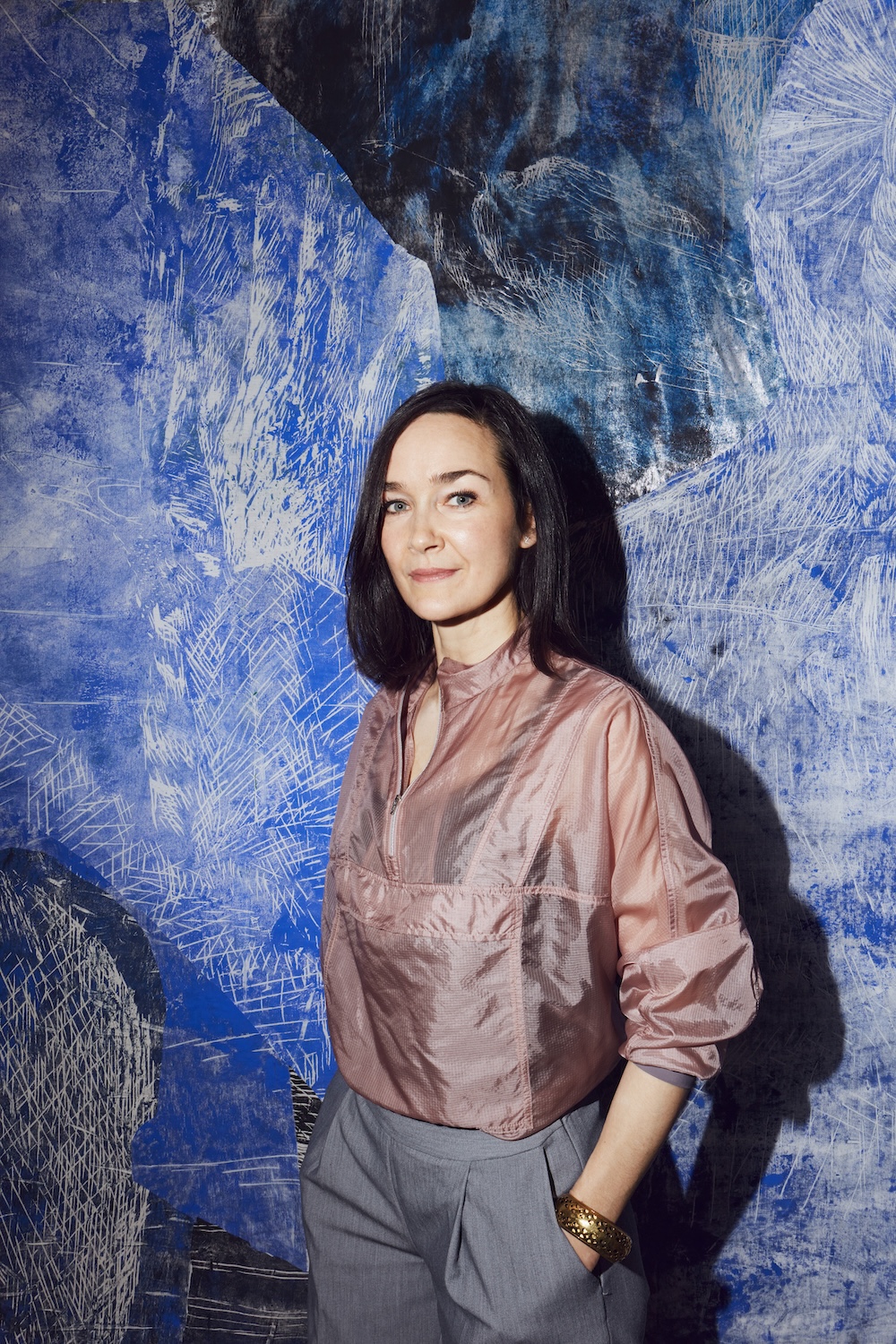
Artist(s):
-
Anna K.E. MoreAnna K.E., * 1986 in Tbilisi (GE), lives and works in New York (US) and Düsseldorf (DE).
-
Sally von Rosen MoreSally von Rosen, *1994 in Gothenburg (SE), lives and works in Berlin (DE) and Gothenburg (SE).
-
Linnéa Sjöberg MoreLinnéa Sjöberg, *1983 in Strömsund (SE), lives and works in Berlin (DE).
Exhibition text
More
The title is a line from the poem To the Oracle at Delphi (2001) by the American poet Lawrence Ferlinghetti. Ferlinghetti uses the ancient Greek figure Oracle, a powerful symbol of seeking wisdom and guidance, and connects it to contemporary challenges of modern life. Touching upon the ambiguity of truth, the poem can be read as a reflection on the broader human desire for meaning and understanding, especially in times of uncertainty.
In the context of this year's curated by theme Fragmented Subjectivity, the line “And tell us how to save us from ourselves” strikes me as a plea or a subtle resistance against the meaninglessness that threatens to devour us. We are all, for better or worse, part of our time’s endless flood of content, both as producers and consumers. Inevitably, we mirror, measure, adapt ourselves and have every possible opportunity to shape and reframe who we are. In this ever-shifting existence, we either lose ourselves or find strategies to take control of our self and self-image. The exhibition presents three artists who reflect on our time’s fractured existence, through video, sculpture, installation, and performance.
A larger than life-figure looms from above and looks down on us. She seems to be motionless – like a statue or a still image – until a drop of saliva appears on her lips and in slow motion drips onto the camera lens, and thus indirectly onto us. The work Peripheral Monday (2020) on the vertical LED screen is both a grand and intimate portrait of the artist herself. Anna K.E. (b. 1986) has chosen a perspective that lends her the appearance of a giant. The framing is narcissistic, fragile, and empowering at the same time. She lays bare her self-image to be thoroughly looked at. But the repeated act of dripping saliva blurs and conceals, creating a protective barrier between her and the world. By using the smartphone format, Anna K.E. contemplates the mutually dependent relationship between our physical and digital selves.
A series of ballet bars constitute another kind of scene for contemplation and observation. Trained as a classical ballerina, Anna K.E. has extensive experience of self-reflection and self-discipline. The barres are inscribed with text fragments from Profound Approach Easy Outcome — written-down thought patterns from the time creating the video work Peripheral Monday. The engraved texts are filled with smooth marzipan that over time has hardened when the sugar in it has been exposed to air humidity. Marzipan’s moldability makes it suitable for creating decorative shapes and figures. The idea of the ‘moldable’ body for classical dancers, how rigorous training and dedication can significantly alter their physique, is close at hand. The text fragments have no given order and can be read and combined freely.
The works of Anna K.E. focus on the very act of looking—through gazing and observing she gains control over her self-image. Linnéa Sjöberg’s (b. 1983) approach might appear more drastic but with a similar goal, to resist the definition of others and to be forced to fit in. In extensive performative projects, Sjöberg has lived art through vastly different personas. The here presented works stem from times when she transformed herself into first a businesswoman and then a tattoo artist. As a businesswoman she was wearing pencil skirts, pearl earrings, and speaking in a soft voice. She stayed in character around the clock for one and a half years, of which almost six months in Vienna (2009). In the years following the performance, Sjöberg created a series of works out of the clothes and accessories she had worn. These works are a way of preserving and isolating an identity Linnéa Sjöberg built but then shed. As a self-taught tattoo artist, she ran a ‘mobile amateur parlor’ named Salong Flyttkartong (transl. Salon Moving Box). It toured haphazardly for over two years (2012–2014), a few times also to Vienna, and through a series of open performances developed into an intricate participatory artwork. This process created its’ own aesthetics, a unique space in the field between the inherent permanence of the tattoo medium and the spontaneity of the performance act. Traces left from this period are found on the artist’s own skin and on all those who chose to get tattooed by her, as well as collages made of the salon’s mobile scenography. Four Generations of Darkness (2016) is a 14-meter-long textile tapestry made from fabrics and other materials from Linnéa Sjöberg's family home. It features traces and the history of several generations of her family, woven together like the continuously inherited and altered genetics, serving as the foundation for a person’s further development. In a series of free-standing works, found objects are strung on bra underwires. These Portraits of Unknown Women (2018 – ongoing) are imaginations of sorts, and the artist’s further exploration of identity and the self.
Fragmentation, disruption, and a lack of coherence inevitably challenge social structures and personal identity. This multi-layered existence offers great possibilities but can just as easily lead to disorientation and isolation. In this line of thought, Sally von Rosen’s (b. 1994) often brutal yet poetic sculptures can be perceived as the shear embodiment of that contradiction. Many of von Rosen’s sculptures appear as pairs or as the result of being split apart and reassembled. They are paradoxical hybrids–neither fully animal nor entirely human, extending beyond mere form. They capture the fleeting nature of the subject’s existence, conveying continuous transformation and redefinition.
In the loop of our time’s relentless superficiality, that we are fed with and feed into, Ferlinghetti’s use of the Oracle serves as a call for self-reflection. These three artistic voices are a reminder that true meaning often lies in understanding oneself and one’s place in the world. Or in the poet’s own closing lines:
And give us new dreams to dream,
Give us new myths to live by!

